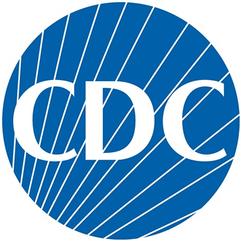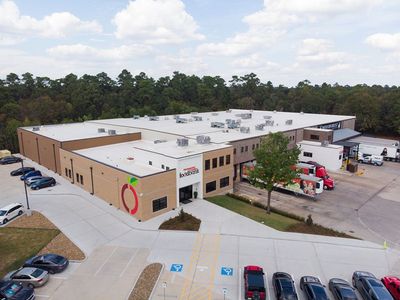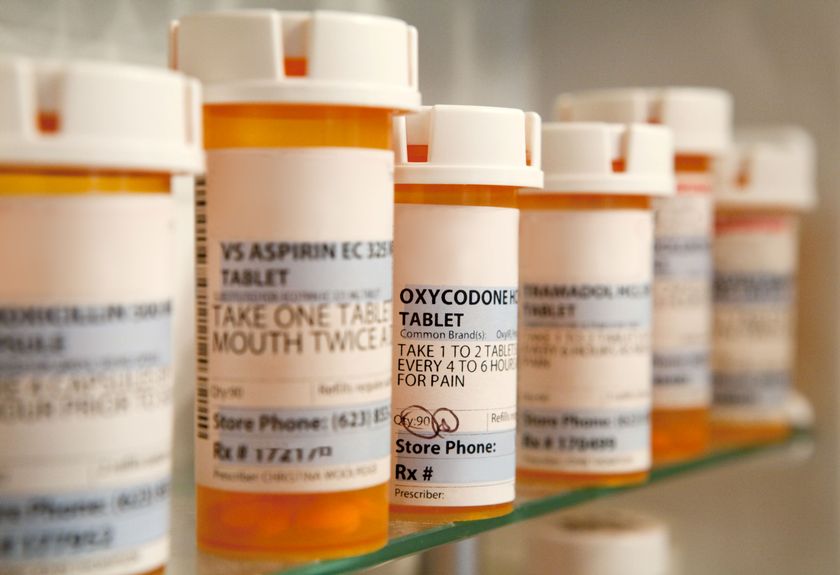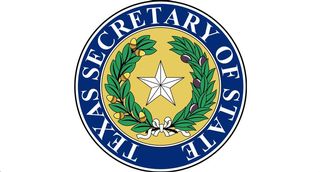- Sections :
- Crime & Public Safety
- Restaurants & Food
- Sports
- More
Categories
Outbreak of E. coli Infections Linked to Romaine Lettuce - Food Safety Alert

WASHINGTON, D.C. -- Based on new information, CDC is advising that consumers not eat and retailers not sell any romaine lettuce harvested from the Salinas, California growing region.
• Most romaine lettuce products are labeled with a harvest location showing where they were grown.
• This advice includes all types of romaine lettuce harvested from Salinas, California such as whole heads of romaine, hearts of romaine, and packages of precut lettuce and salad mixes which contain romaine, including baby romaine, spring mix, and Caesar salad.
• If you have romaine lettuce at home:
Look for a label showing where the romaine lettuce was grown. It may be printed on the package or on a sticker.
If the label says “Salinas” (whether alone or with the name of another location), don’t eat it, and throw it away.
If it isn’t labeled with a growing region, don’t eat it, and throw it away.
If you don’t know if the lettuce is romaine or whether a salad mix contains romaine, don’t eat it, and throw it away.
Wash and sanitize drawers or shelves in refrigerators where romaine lettuce was stored.
Follow these five steps to clean your refrigerator.
• If you are buying romaine lettuce at a store:
Look for a label showing where the romaine lettuce was grown. It may be printed on the package or on a sticker.
If the label says “Salinas” (whether alone or with the name of another location), don’t buy it.
If it isn’t labeled with a growing region, don’t buy it.
• Restaurants and retailers should check the label on bags or boxes of romaine lettuce, or ask their suppliers about the source of their romaine lettuce.
Look for a label showing where the romaine lettuce was grown. It may be printed on the package or on a sticker.
If the label says “Salinas” (whether alone or with the name of another location), don’t sell or serve it.
If it isn’t labeled with a growing region, don’t sell or serve it.
• Suppliers, distributors, and others in the supply chain should not ship or sell romaine harvested in Salinas, California.
On November 21, 2019, Missa Bay, LLC, recalled salad products due to possible E. coli contamination.
Do not eat or sell any of the recalled salad products, which were sold under many different brand names.
• The recalled salad products have “Use By” dates ranging from October 29, 2019, to November 1, 2019.
• The recalled products have establishment number “EST. 18502B” inside the USDA mark of inspection.
• Visit the USDA website for a full list of recalled products.
This recall includes salad products that contained contaminated romaine lettuce. The romaine lettuce was tested by the Maryland Department of Health as part of a foodborne illness outbreak in Maryland.
Take action if you have symptoms of an E. coli infection.
• Talk to your healthcare provider.
• Write down what you ate in the week before you started to get sick.
• Report your illness to your local health department.
• Assist public health investigators by answering questions about your illness.
• Prevent infections in others by practicing proper hygiene, especially good handwashing.
Latest Outbreak Information
• A total of 40 people infected with the outbreak strain of E. coli O157:H7 have been reported from 16 states.
A total of 28 hospitalizations have been reported. Five people have developed hemolytic uremic syndrome, a type of kidney failure. No deaths have been reported.
• Epidemiologic, laboratory, and traceback evidence collected to date indicate that romaine lettuce from the Salinas, California growing region may be contaminated with E. coli O157:H7 and is making people sick.
• Whole genome sequencing shows that the E. coli strain in romaine lettuce tested by the Maryland Department of Health is closely related genetically to the E. coli found in sick people in this outbreak. The romaine lettuce was harvested from the Salinas, California growing region.
• The investigation is ongoing to determine the source of contamination and if additional products are linked to illness.
• CDC will provide more information as it becomes available.
Symptoms of E. coli Infection
• People usually get sick from Shiga toxin-producing E. coli 2 to 8 days (average of 3 to 4 days) after swallowing the germ.
• Some people with E. coli infections may get a type of kidney failure called hemolytic uremic syndrome (HUS).
• E. coli infection is usually diagnosed by testing a stool sample.
• Antibiotics are not recommended for patients with suspected E. coli infections until diagnostic testing can be performed and E. coli infection is ruled out. Some studies have shown that administering antibiotics to patients with E. coli infections might increase their risk of developing HUS, and a benefit of treatment has not been clearly demonstrated.
For more information, see Symptoms of E. coli Infection.
• Most romaine lettuce products are labeled with a harvest location showing where they were grown.
• This advice includes all types of romaine lettuce harvested from Salinas, California such as whole heads of romaine, hearts of romaine, and packages of precut lettuce and salad mixes which contain romaine, including baby romaine, spring mix, and Caesar salad.
• If you have romaine lettuce at home:
Look for a label showing where the romaine lettuce was grown. It may be printed on the package or on a sticker.
If the label says “Salinas” (whether alone or with the name of another location), don’t eat it, and throw it away.
If it isn’t labeled with a growing region, don’t eat it, and throw it away.
If you don’t know if the lettuce is romaine or whether a salad mix contains romaine, don’t eat it, and throw it away.
Wash and sanitize drawers or shelves in refrigerators where romaine lettuce was stored.
Follow these five steps to clean your refrigerator.
• If you are buying romaine lettuce at a store:
Look for a label showing where the romaine lettuce was grown. It may be printed on the package or on a sticker.
If the label says “Salinas” (whether alone or with the name of another location), don’t buy it.
If it isn’t labeled with a growing region, don’t buy it.
• Restaurants and retailers should check the label on bags or boxes of romaine lettuce, or ask their suppliers about the source of their romaine lettuce.
Look for a label showing where the romaine lettuce was grown. It may be printed on the package or on a sticker.
If the label says “Salinas” (whether alone or with the name of another location), don’t sell or serve it.
If it isn’t labeled with a growing region, don’t sell or serve it.
• Suppliers, distributors, and others in the supply chain should not ship or sell romaine harvested in Salinas, California.
On November 21, 2019, Missa Bay, LLC, recalled salad products due to possible E. coli contamination.
Do not eat or sell any of the recalled salad products, which were sold under many different brand names.
• The recalled salad products have “Use By” dates ranging from October 29, 2019, to November 1, 2019.
• The recalled products have establishment number “EST. 18502B” inside the USDA mark of inspection.
• Visit the USDA website for a full list of recalled products.
This recall includes salad products that contained contaminated romaine lettuce. The romaine lettuce was tested by the Maryland Department of Health as part of a foodborne illness outbreak in Maryland.
Take action if you have symptoms of an E. coli infection.
• Talk to your healthcare provider.
• Write down what you ate in the week before you started to get sick.
• Report your illness to your local health department.
• Assist public health investigators by answering questions about your illness.
• Prevent infections in others by practicing proper hygiene, especially good handwashing.
Latest Outbreak Information
• A total of 40 people infected with the outbreak strain of E. coli O157:H7 have been reported from 16 states.
A total of 28 hospitalizations have been reported. Five people have developed hemolytic uremic syndrome, a type of kidney failure. No deaths have been reported.
• Epidemiologic, laboratory, and traceback evidence collected to date indicate that romaine lettuce from the Salinas, California growing region may be contaminated with E. coli O157:H7 and is making people sick.
• Whole genome sequencing shows that the E. coli strain in romaine lettuce tested by the Maryland Department of Health is closely related genetically to the E. coli found in sick people in this outbreak. The romaine lettuce was harvested from the Salinas, California growing region.
• The investigation is ongoing to determine the source of contamination and if additional products are linked to illness.
• CDC will provide more information as it becomes available.
Symptoms of E. coli Infection
• People usually get sick from Shiga toxin-producing E. coli 2 to 8 days (average of 3 to 4 days) after swallowing the germ.
• Some people with E. coli infections may get a type of kidney failure called hemolytic uremic syndrome (HUS).
• E. coli infection is usually diagnosed by testing a stool sample.
• Antibiotics are not recommended for patients with suspected E. coli infections until diagnostic testing can be performed and E. coli infection is ruled out. Some studies have shown that administering antibiotics to patients with E. coli infections might increase their risk of developing HUS, and a benefit of treatment has not been clearly demonstrated.
For more information, see Symptoms of E. coli Infection.
Comments •

















